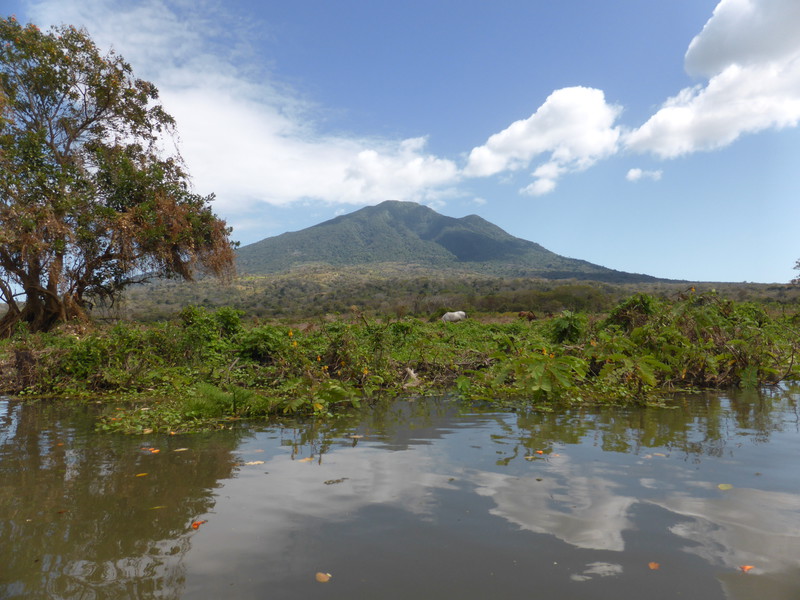
After spending so long lounging around on Little Corn Island, we weren't sure about the wisdom of visiting another island so soon, but I'm so glad we did. Isla de Ometepe, the world's largest freshwater island that sits about halfway along the southern edge of Lago de Nicaragua, is a stunningly beautiful place – particularly if you like volcanoes, as I do – and although we didn't stay for long, it was well worth the detour on our way south to the border with Costa Rica.

The island's beauty lies in its skyline; shaped like a figure of eight turned anti-clockwise through 45°, the island is made up of two huge volcanoes that are joined by a saddle of sand, all of which is smothered in lush green vegetation. The volcanoes are quite different in character: the larger of the two, 1610m-high Volcán Concepción, is one of the most perfect volcanic cones that I've ever seen, while 1394m-high Volcán Maderas looks more like the remains of a cosmic hard-boiled egg after the teaspoon has done its worst. And because the two volcanoes sit facing each other across the saddle of sand, with Concepción to the northwest and Maderas to the southeast, you get wonderful and ever-changing views of the peaks as you move around the island. It's breathtaking, as long as the clouds are being kind (which, for our visit, they were for the most part).

To be fair, we didn't do a great deal of exploring. After our night in Altagracia, we decamped to a very pleasant little hotel on Playa Santa Domingo, the beach along the northeastern edge of the sand saddle that joins the two volcanoes. The food in the hotel restaurant was organic and refreshingly un-Nicaraguan, and we happily collapsed into the hammocks overlooking the bay. The only drawback is that it's extremely windswept on the northern side of the island, with the trade winds pounding across Lago de Nicaragua and straight into the beach, but the scenery is stunning and hardly any of the beach is developed, with just a handful of small hotels along the northern section and practically nothing at the southern end.

Walking along the beach is an enjoyable way to spend the day; from the southern end of the curved bay there are wonderful views of Concepción, while the northern section has Maderas as a backdrop, and all the while the waves pound into the black sand beach, driven by the steady breeze. Because of the reliable wind, this is a popular spot for kitesurfing, and their colourful sails ride up and down the lively surf; meanwhile, because Ometepe is a very rural area, farmers drive their cattle down to the lake to drink, and horses live at the southern end of the beach, ready to take visitors on beach rides. It's a strange mix of slow traditional farming and high-octane modern sport, all in the shadow of that perfect cone and its binary companion.

For our last day on the island, we took a kayak up the Rio Istiam, a small river (or, more accurately, a river-shaped mangrove swamp) that almost cuts the island in two across the southern end of the sand saddle. Our guide was keen to show us the vibrant birdlife, alligators and turtles living in the swamp, and he did a good job, but I kept getting distracted as we'd paddle round another corner in the river and bang! There's another picture-postcard view of Concepción's cone, or another delightful skyline dominated by the jagged peaks of Maderas. These are the days when you're thankful for digital cameras; Ometepe is such a pretty island you just can't stop framing the views and clicking that button. What a lovely way to end our Nicaraguan journey...